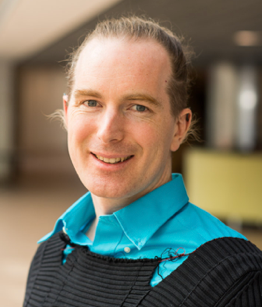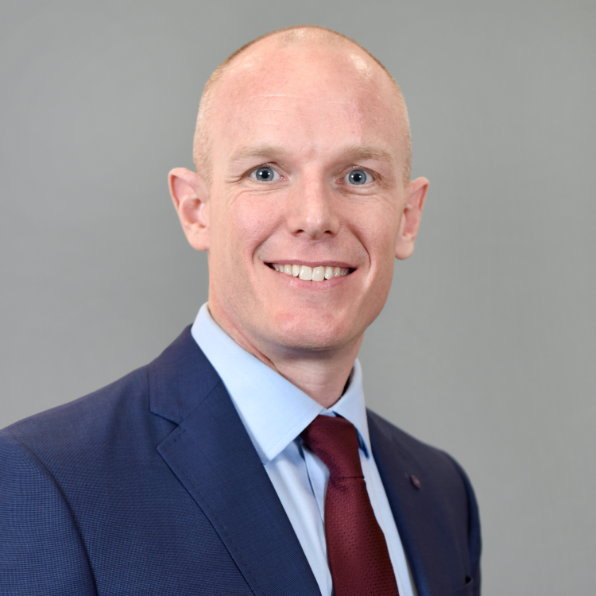Bioimaging
Bioimaging
Our imaging faculty work on developing new imaging techniques and contrast agents that target specific pathologies, creating translational imaging technologies, and using novel MRI phase mapping methods to measure tissue electrical properties. They collaborate closely with local medical centers across Phoenix, the Magnetic Resonance Research Center at ASU, and the Keller Center for Imaging Innovation at Barrow Neurological Institute.
Explore the list of our faculty who work in this research area below.
Benjamin Bartelle
Benjamin Bartelle
Assistant Professor

Expertise
Molecular fMRI of neuroinflammation and degeneration, in vivo synthetic biology of reporters sensors and actuators, genetic and biomolecular circuits.
Laboratory: The Bartelle lab develops tools and methods for “Molecular fMRI.” Our work extends from synthetic biology, designing reporters and sensors, to functional experiments in living animals. Our goal is to reverse engineer the genetic and molecular circuits of healthy brain function to build new therapies for neurodegenerative diseases.
Scott Beeman
Scott Beeman
Assistant Professor

Expertise
Quantitative MRI, Biophysical Modeling, Imaging and Metabolism
Laboratory: The goals of the Beeman Laboratory are two-fold: (i) to devise non-invasive magnetic resonance (MR)-based methods to quantify tissue microstructure and function in vivo and (ii) to apply these techniques to advance the scientific understanding of health and disease. Ongoing research leverages expertise in biophysical modeling, MR pulse sequence design, and MR-detectable molecules to design purpose-built MR protocols that extract objective and quantitative physiologic information. Examples of quantitative MR-based metrics include cell size, organ perfusion, and tissue oxygenation.
Vikram Kodibagkar
Vikram Kodibagkar
Associate Professor

Expertise
MRI probe and technique development for cellular, molecular and metabolic imaging
Laboratory: The Prognostic Biomedical Engineering Laboratory (ProBE) focuses on engineering solutions for prognostic imaging of the tissue microenvironment in the diseased state. Current research involves development of techniques for fast Magnetic Resonance Imaging of tissue hypoxia and metabolites, engineering novel MRI and optical imaging probes, and theranostics. The group works on all aspects of MRI: physics of the acquisition, hardware development, sequence development, in vivo studies, image reconstruction and processing. Current disease states under study include cancer and traumatic brain injury. The group’s emphasis is on non-invasively obtaining prognostic information early, in response to disease and treatment.
Rosalind Sadleir
Rosalind Sadleir
Associate Professor

Expertise
Neuro imaging and neural activity detection, dynamic physiological monitoring, computational modeling
Laboratory: Research in the Neuro-electricity Lab is concerned with modeling and imaging biological conditions using targeted electrical methods. Work in the lab varies from the very practical (including device design and commercial development) to the conceptual and theoretical.
Barbara Smith
Barbara Smith
Assistant Professor

Expertise
Imaging and biomarker discovery, innovating point-of-care diagnostics
Laboratory: The Smith Laboratory focuses on engineering solutions to better diagnose problems associated with women’s health and mental illness. Ongoing research in the lab utilizes imaging technologies and olfactory sensing to forge an entirely new path towards early stage detection and diagnostic monitoring. The overarching goal is to translate technologies developed in the lab for improved patient outcomes.
Sung-Min Sohn
Sung-Min Sohn
Assistant Professor

Expertise
Bio-inspired electrical circuits and systems, medical imaging instrumentation development, MRI electronics
Laboratory: The lab of Bio-inspired Circuits and Systems (BiCS) focuses on the development of novel RF coils (antenna-like devices in MRI) and RF/analog/digital interface circuits to maximize the performance of the RF coils and accessibility of the MRI scanners. Ultimately, higher quality MR images can be obtained with the research results of the lab of BiCS under various MR studies. The modern RF/analog/digital design also will be applied for many different biomedical applications such as electrical impedance tomography, electrical brain stimulation, wearable devices, etc.